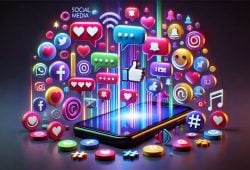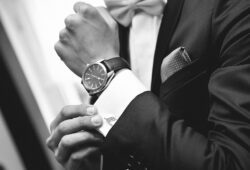
This Friday, Canadian Prime Minister Mark Carney announced that the country has removed several of its retaliatory tariffs against the United States, following an agreement reached after discussions with U.S. authorities on trade and national security. Some tariffs will remain in place; here’s a breakdown of which ones are going and which ones are staying.
Which retaliatory tariffs against the United States did Canada remove?
According to the Canadian Prime Minister, the tariffs will be lifted on September 1 for goods included under the United States–Mexico–Canada Agreement, which covers a wide range of products, such as:
- Corn, wheat, and other grains
- Milk, cheese, and dairy products
- Beef, pork, and chicken
- Fruits and vegetables
- Processed products such as flour and oil
- Fresh, frozen, and processed fish
- Seafood, shrimp, and lobster
- Medicines and vaccines
ALSO READ PlayStation 5 raises its prices in the United States! This is how much it will cost
- Fertilizers and industrial chemicals
- Sawn lumber and boards
- Paper and cardboard
- Crude oil and refined products
- Natural gas and electricity
- Metallic and non-metallic minerals
- Clothing, footwear, and accessories
- Fabrics and textile materials
- Home appliances
- Computers and telecommunications equipment
- Medical and electronic equipment
- Wine and spirits
- Beer
- Tobacco and related products
Which tariffs against the United States remain in effect?
The 25% tariffs against the United States will remain on the following products:
- Automobiles
- Steel
- Aluminum
The tariff dispute between the United States and Canada
In response to U.S. tariffs on steel and aluminum, Canada implemented 25% retaliatory duties in March on a wide variety of products from the United States. The measure aimed to balance the economic impact of Washington’s tariffs and protect Canadian industries.
Later, in July, President Donald Trump announced his intention to raise tariffs on Canada to 35%. He cited reasons including the rise in fentanyl trafficking and Canada’s reluctance to cooperate with the United States on border security and drug control.
According to U.S. Customs and Border Protection, 43 pounds of fentanyl were seized at the northern border in 2024, with an additional 58 pounds confiscated so far this year. This increase in drug seizures was mentioned as a key factor in the U.S. stance on tariffs.
Amid these trade tensions, Canadian officials expressed their willingness to engage in dialogue with the United States. In particular, Carney stated on the social media platform X that Canada is committed to working with its southern neighbor to reach an agreement that benefits both parties and reduces economic and trade frictions.
ALSO READ Walmart reports 2025 financial results: What impact did Trump’s tariffs have?
What are tariffs?
Tariffs are taxes imposed on the import of goods. These tariffs benefit locally manufactured products by giving them a competitive price advantage over similar imported products. They also represent a source of revenue for governments.
Which products could see price increases due to tariffs in Canada?
Here are some of the products currently exported from Canada to the United States that could experience price increases as a result of the tariffs:
- Wood
- Coal
- Aluminum
- Iron and steel appliances
- Cereals, flours, and starches
- Dairy products
- Rubber
- Alcoholic beverages
- Carpets and other textile floor coverings
- Wool, animal hair, yarn, and horsehair
- Umbrellas
- Canes, seat canes, whips
- Cotton
- Photographic or cinematographic products
- Cork products
- Printed books








